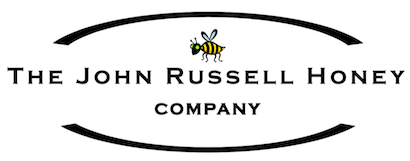“Mind your own beeswax” is something we may hear children shouting at each other in the playground and it means “it’s none of your business” or “mind your own business”. Story has it that back in the 18th and 19th centuries, women who had disfiguring marks on their face left by smallpox used beeswax to smooth out their complexion and hide the scars. The warmth of the woman’s skin, hard work, warm weather or sitting too close to a kettle by the fire would cause the beeswax to soften defacing facial features. In extreme circumstances melting beeswax could burn skin, hair and clothes if you were too close to the fire. An onlooker who stared too long or got too close to the melt down would be told to “mind your own beeswax” or “stop staring at me”.
Beeswax is a natural wax produced by honeybees and it is the foundation of the beehive. Historically, it has been used as a plastic, a lubricant, a waterproofing agent, in wax casting of metals and glass, as a polish for wood and leather, as an ingredient in cosmetics, a medium in encaustic painting (think pigment mixed with hot wax) and for making candles. Today, candles are popular for relaxation, ambiance and decoration and there is a lot of debate about whether they are good for your health.
Candles are made from a variety of waxes with the most popular being paraffin, soy and beeswax. Coconut wax is also making an appearance on the market and gaining popularity. So which type of candle wax is better? The answer is not exactly cut and dry as the various types of waxes each have their pros and cons.
Paraffin wax is the least expensive and most widely used because it can hold a high amount of fragrance and colour. It comes in various melting points making it suitable for making different types of candles. It is however, not the most eco-friendly type of candle wax since it is made from a by-product of the oil industry: if it is not properly cared for, it will create soot (a mass of impure carbon particles). Paraffin is, however, the traditional wax that has been used in candle making for hundreds of years and it is cheap ranging from $2 - $10 per lb. Since paraffin is potentially toxic in nature, and if all natural products are your thing, then it is best to seek an alternative wax.
Soy wax is a vegetable wax made from the oil of soybeans making it more eco-friendly than paraffin wax. Soy wax candles are usually container candles because soy wax has a lower melting point than other types of wax. Most soy wax candles are made from a blend of different waxes like paraffin and beeswax. Even if candles are labeled as 100% soy wax, they may have been treated with paraffin and 90% of soy is genetically modified and mixed with vegetable oil. Soy candles go through several chemical treatments before they are ready for sale. As soy wax is a by-product of the soybean industry, there are growing concerns over widespread deforestation and displacement of small farmers and indigenous people as extensive natural areas are destroyed to allow for the cultivation of soybeans which involves the use of fertilizers and pesticides in production. The price of soy ranges from $2 – $10 per lb.
Beeswax is the oldest candle making ingredient: in fact, beeswax candles have been found in the great pyramids of Egypt. Like the name implies, it is made from bees and is a by-product of the honey making process. As a result, it has a golden colour and a subtle sweet smell although you will not be able to add other fragrances to it effectively because an artificial scent will interfere with the natural scent of beeswax. Beeswax is the one of the most expensive options for candle making at $10 or more per lb although it is denser than soy wax or paraffin so tends to burn longer.
Coconut wax is the new kid on the block and is harvested from, that’s right, coconuts – a high yield and sustainable crop which adds to its popularity. Made from cold pressed coconut meat or coconut mixed with soy wax, it too is blended with paraffin. Coconut wax holds fragrance and colour well, has a clean burn and produces very little soot. Unfortunately, it is the most expensive candle wax of all: that is why a lot of candle makers blend coconut wax with soy wax. The price of coconut wax beads for candle making varies from one supplier to another dependent on quantity. However, rest assured it will be more expensive than paraffin, soy or beeswax.
So, what’s best for the environment? Beeswax, soy wax and coconut wax are all environmentally friendly options for paraffin candles which have a negative effect on the environment. Truth be told, paraffin candles affect the air quality in homes as when they are burned, they release carcinogenic toxins (benzene, toluene, formaldehyde, acetaldehyde, acrolein and most recognizable, soot) into the air. The emissions produced by paraffin candles contain many of the same toxins produced by burning diesel fuel. Paraffin candles and scented aromatic candles are the worst environmental offenders on the market. Pollution from these candles can contaminate ventilation systems, ductwork, discolour walls, ceilings and the contents in homes. On the health side of things, lighting a lot of paraffin candles frequently in an unventilated space can lead to problems such as asthma causing allergy like symptoms, or irritate the respiratory tract.
Since many people suffer from anxiety and depression during the long dark days of winter beeswax candles are a great way to reduce your stress levels and improve your mental health. Some benefits of burning beeswax candles include:
- Better sleep
- Reduction of stress and anxiety
- Improvement in moods
- Increased focus and concentration
- Relief from headaches and sinus congestion
- Reduction in symptoms of asthma and allergies
Beeswax candles are not only beautiful and fragrant they offer a range of health benefits. So, the next time you are feeling stressed out, mind your beeswax and light a John Russell beeswax candle to improve your mental health and help keep the environment clean.
References
Anderberg, J. (2019). “DIY chandlery: how to make your own candles”. Get Action: The art of Manliness. Retrieved from https://www.artofmanliness.com/skills/how-to/diy-chandlery-how-to-make-your-own-candles/
Blue Ox Heating & Air. “Are candles bad for the air quality in your home?” Retrieved from https://goblueox.com/blog/are-candles-bad-for-the-air-quality-in-your-home/
Earley, B. (2021). “Understanding the differences between each type of candle wax”. Martha Stewart. Retrieved from https://www.marthastewart.com/8061950/candle-wax-type-guide
Mind Your Beeswax | Luxury Candles. “How burning beeswax candles can benefit your mental health.” Retrieved from https://yourbeeswaxcandles.com/blogs/news/how-burning-beeswax-candles-can-benefit-your-mental-health
Quora. “What is the etymology of, “mind your own beeswax”?” Retrieved from https://www.quora.com/What-is-the-etymology-of-mind-your-own-beeswax
The Free Dictionary. “Mind your own beeswax.” Retrieved from https://idioms.thefreedictionary.com/mind+your+own+beeswax
Upton, E. (2014). “The origin of the phrase “mind your own beeswax”. Today I Found Out: Feed Your Brain.” Retrieved from http://www.todayifoundout.com/index.php/2014/05/origin-phrase-mind-beeswax/
Valente, A. “Beeswax vs soy wax – what is the difference”? Vegan Foundry. Retrieved from https://veganfoundry.com/beeswax-vs-soy-wax-what-is-the-difference/
World Wildlife Federation. “Soy: An overview.” Retrieved from https://www.worldwildlife.org/industries/soy

